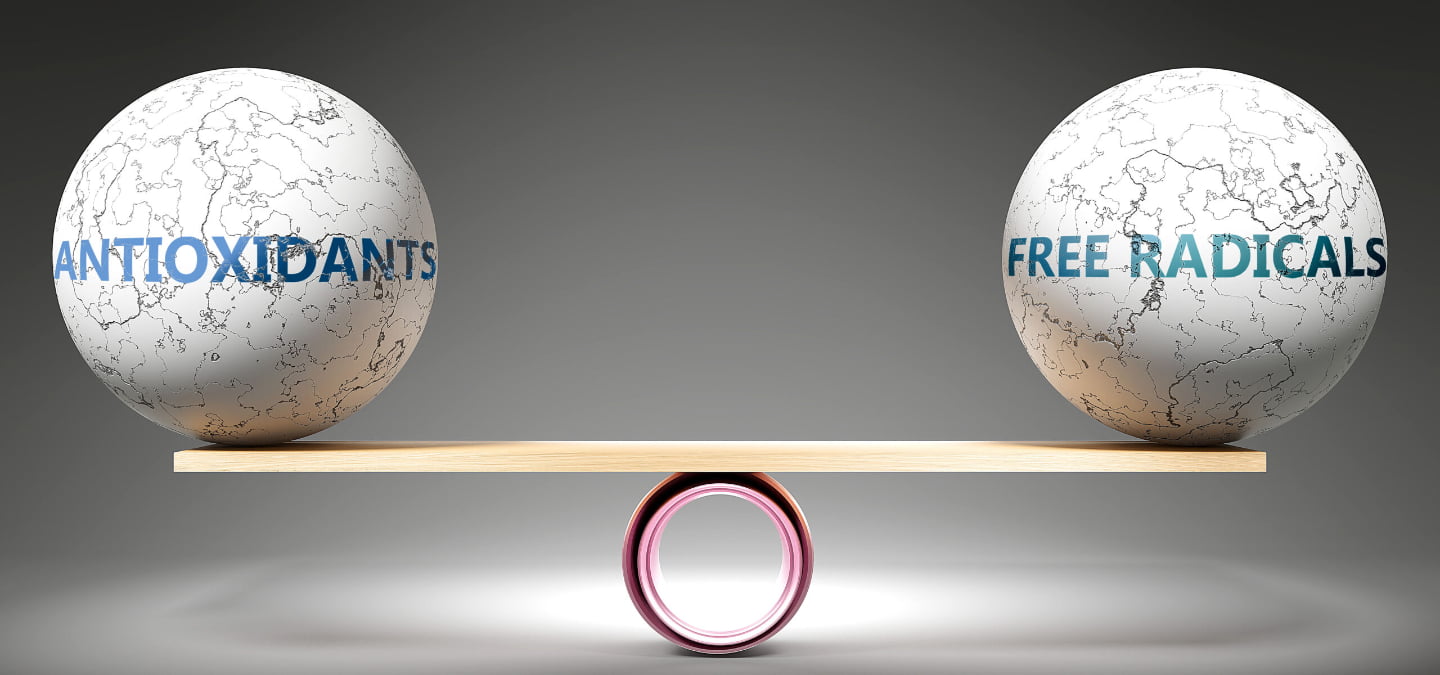How free radicals are formed and when we talk about oxidative stress
We often hear about oxidative stress and free radicalsA free radical is a particularly reactive molecule or atom that contains at least one odd electron in its outermost orbital. Because of this chemical characteristic, free radicals are highly unstable and try to return to equilibrium by stealing from the nearby atom the electron needed to equalize its electromagnetic charge. This mechanism gives rise to new unstable molecules, triggering a chain reaction that, if not stopped in time, ends up damaging cellular structures and metabolic processes., and almost always in a negative way. We find these terms in association with an unhealthy lifestyle, the onset of various diseases, and the presence of external polluting factors. What is often omitted, however, is that the production of free radicals has two sides: when it occurs in a condition of prolonged disequilibrium it causes damage to biomolecules, giving rise to oxidative stress. While if it is maintained at a physiological level, the so-called oxidative eustress, is essential in many vital biological processes for the body.
Many of our body’s natural biological processes-such as respiration, the digestion of food, the metabolism of alcohol, and the transformation of fat into energy-produce those compounds called free radicals (or reactive oxygen species, ROS). It is a matter of electron transfer: when oxygen enters energetic reactions it can give up or accept electrons, and this transition generates free radicals, which are very reactive molecules, and antioxidant (or reducing) molecules. It should be pointed out that ROS are necessary for life because they provide for the destruction of bacteria by phagocytes, and in low to moderate amounts they are useful in regulating a wide variety of cellular functions. If produced in excessive amounts, however, they result in structural modifications of cellular proteins and alterations of their functions, which can cause damage to lipids, proteins, and DNA, and lead to the disruption of vital cellular processes.
In low or moderate amounts, free radicals are necessary for life. If produced in excessive amounts, however, they lead to the disruption of vital processes in cells
A delicate balance
Because free radicals are necessary for life, aw we have said, the body has several mechanisms to minimize the damage they cause when they are in excess and, in general, to protect itself from excessive production. Antioxidants play a key role in these defense mechanisms. An organism is healthy when it can maintain a balance between oxidants and antioxidants, and thus the continuous production of free radicals is balanced by a similar rate of antioxidant consumption. In pathological conditions or metabolic stress, on the contrary, free radicals overload antioxidant systems leading to an imbalance that results in the condition of oxidative stress.

Some external factors that can induce excessive production of free radicals
The occurrence of chronic diseases
Several chronic diseases such as cardiovascular disease, diabetes, neurodegenerative diseases, and cancer have been linked to oxidative stress. It is increasingly evident that the pro-oxidant factors, which can upset the balance of an organism and stimulate excessive production of free radicals include lifestyle, and in particular certain bad habits such as a continuous intake of processed foods, exposure to a wide range of chemical pollutants (both environmental and others: smoking, alcohol, drugs) and lack of exercise.
Lifestyle, poor diet, exposure to chemical pollutants, and lack of exercise are pro-oxidant factors that cause oxidative stress
Oxidative stress and aging
Oxidative stress not only causes the onset of certain diseases, but is also directly involved in cellular aging processes. According to some theories, when the level of free radicals is increased,mitochondriaundergo an alteration in their functionality that decreases cellular regenerative capacity. Under these conditions, the tissue is said to undergo biological decline and reduce its ability to adapt to stress. At the same time, the increased level of oxidation increases the expression of certain pro-inflammatory genes , which in turn promote oxidation, in a vicious cycle.
Lifestyle: sedentariness and exercise
Regarding exercise in particular, free radicals are produced during the contraction of muscle fibers. Not only that, they exert numerous direct and indirect effects on muscle activity (in terms of contractility, excitability, metabolism, and calcium homeostasis) and are involved in muscle fatigue during intense exercise. If exercise is done in moderation, however, with low- and medium-intensity workouts that are consistent over time, a positive effect is generated that stimulates the body’s production of antioxidants. In fact, exercise is considered the main treatment among nonpharmacological therapies, appropriately supported by lifestyle changes, and has been shown to be particularly effective in chronic cardiovascular disease. However, if we continually subject our bodies to strenuous, prolonged exercise, which can result in overtraining syndrome, the beneficial effects are reduced and the result will instead be increased oxidative stress.






